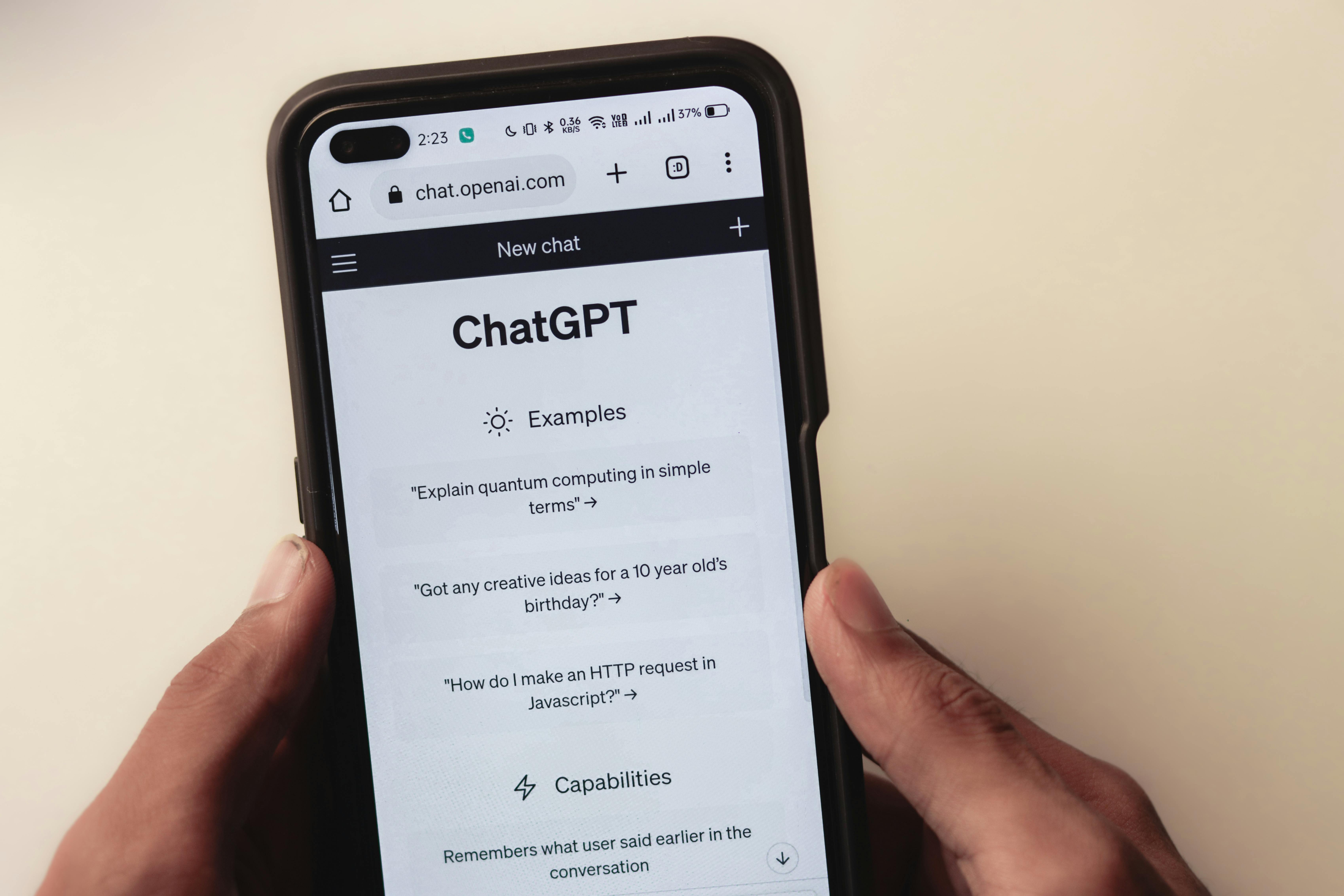AI can feel like magic, but the real trick is the prompt, the tiny spell that tells the genie what to do. Prompts are short instructions you give an AI, kind of like asking a smart friend for help with clear, simple directions. Say what you want, set the tone, add key details, then let the model do the heavy lifting. Do this well, and you get sharper answers, cleaner drafts, and faster wins.
If you’re new, free tools make the first step painless. No credit card, no stress, just tap and try. You learn by doing, which beats reading a thousand tips. Plus, you pick up patterns fast, like how context, examples, and constraints shape better output.
October 2025 is buzzing with handy updates, so it’s a great time to jump in. Tools are getting more personal and flexible, which means less guesswork. Taskade now lets you add your own notes or facts into prompts for tighter results, a huge help for emails, briefs, and blog outlines. AI Parabellum rolled out an AI Prompt Manager that keeps your best prompts organized, versioned, and ready to reuse.
In this guide, you’ll find easy, beginner‑friendly picks that punch above their weight. You’ll see flexible prompt makers like Taskade and Feedough, plus smart helpers like AI Parabellum and WebUtility that tune tone and style for ChatGPT. We’ll also nod to Originality.ai for quick writing and code prompts when you just need a strong start.
Grab a coffee, think of one small task you want done, and get ready to try a prompt or two. You’ll learn how to ask, what to tweak, and which free tools spark ideas on the spot. By the end, you’ll have a tiny toolkit that turns wild ideas into tidy outputs, fast and fun.
Why Start with Free AI Prompt Tools? Easy Wins for New Users
Free tools remove the pressure. No wallet, no setup maze, just type and see what happens. You get quick wins that build confidence, like turning a rough email into a clean draft or shaping a bland outline into a sharp plan.
Beginner worries are normal. You might fear confusing the AI or wasting time. Friendly interfaces fix that with plain language, sample prompts, and guardrails. Templates act like training wheels, so you learn how to ask without guessing. It feels like a tiny prompt coach in your pocket, whispering, “Say it this way.”

Here is why free tools are a smart first stop:
- No commitment: Try 3 to 5 tools in under an hour.
- Low risk learning: Test prompts, fail fast, tweak, repeat.
- Fast experiments: See how tone, context, and examples change results.
- No-login options: Many tools let you try a few runs before sign-up, a small but real relief.
Quick example to prove the point:
- “Write a polite refund email, keep it under 120 words, and suggest store credit.” You get a neat draft to edit, not a blank page stare-down.
- “Turn my grocery list into a short story about a detective shopping for clues.” Boring chores become tiny adventures.
If you want a trusted roundup to spark ideas, this quick review of prompt generators shows what free tiers can do, including simple templates and prompt examples: 5 Best AI Prompt Generators In 2025. If you code or want to dabble, this overview of beginner-friendly code tools maps free options by task: 10 Best AI code generators in 2025.
Spot the Best Fits for Your First AI Tries
Pick the tool by the job, not the hype. Start small, match your goal, then pick features that keep you moving.
Use this quick guide to choose:
- Writing fast: Look for tools with prompt templates, tone presets, and sample outputs. These remove guesswork and teach good structure.
- Brainstorming: Choose generators with idea lists, one-click variations, and “expand or shorten” buttons. You get volume without chaos.
- Kids or absolute beginners: Block-based or card-style prompts keep it visual and safe. Drag, drop, run, smile.
- Emails and reports: Seek “insert context” fields and personas like “friendly support agent” or “firm project manager.” Precision beats fluff.
- Coding tries: Find tools with code snippets, fix suggestions, and clear error notes. Even a basic “explain this code” button helps a lot.
A simple map to speed your pick:
| Your goal | Tool style to try | Why it helps |
|---|---|---|
| Clean emails, short posts | Template-based writer | Teaches structure and tone with examples |
| Ideas in bulk | Prompt generator with variations | Fast drafts you can prune in minutes |
| Learning with kids | Block-based interface | Safe, visual, and fun to explore |
| First coding steps | Code helper with explanations | Shows how and why, not just output |
Beginner-friendly features that matter:
- Templates: “Product review,” “lesson plan,” “bug report.” Clear starting points.
- Examples: Side-by-side prompts and outputs, like training wheels.
- Tone controls: Casual, formal, playful, serious. One switch, big change.
- Context slots: Paste notes, requirements, or data into labeled fields.
- Undo and variations: Try again without losing the thread.
Tiny prompt tricks you can steal today:
- Add a role: “You are a helpful editor. Improve this intro for clarity.”
- Add constraints: “Keep it under 120 words, add two bullets, no emojis.”
- Add examples: “Match this style: short, friendly, direct. Example: ‘Thanks for your time. Here is the plan.’”
- Add audience: “Write for a 9th grader, plain words, short sentences.”
If you want a first try that feels like coaching, start with a tool that shows three things on one screen: a template, a filled example, and a place to paste your notes. That mix teaches you faster than any guide. After a few runs, you will hear the prompts in your head, and that is when the magic happens.
Top Free Tools to Experiment with AI Prompts Today
You do not need a giant toolkit to start. You need a few friendly sidekicks that make your ideas sharper, faster, and more fun. These picks keep the learning curve small and the results big. Try one, then stack a second. Each tool below includes a quick example so you can test it in under a minute.

Taskade AI Prompt Generator: Build Prompts Your Way
Taskade is the calm coach that helps you write prompts that fit your voice. It works well for emails, briefs, and blog drafts, and it lets you add personal notes or context so the output matches your facts. You can shape tone, audience, and structure, then send the prompt into your favorite AI tool.
- Why beginners like it: Simple interface, clear fields, and zero fluff. You can tweak and rerun fast.
- Plays nice with others: Use Taskade to build prompts, then paste into ChatGPT, Claude, or Gemini.
- Save time: Build once, reuse often for repeat tasks like weekly updates or outreach.
Try this: “Write a fun story about a cat detective.” Add a note like, “Set it in a tiny bakery, keep it under 180 words.” Watch the tone lock in.
Explore the tool here: Taskade AI Prompt Generator.
Feedough AI Prompt Generator: Quick Polish Without the Fuss
Feedough is speedy. No login, no detours, just a clean box that turns rough ideas into sharper prompts. It is great when you have a half-formed thought and need it tidy for ChatGPT or Midjourney.
- Why beginners like it: Instant results with clear, detailed phrasing. Perfect for first drafts.
- Use cases: Brainstorms, one-liners turned into structured prompts, quick tone fixes.
- Saves time: Cuts the “how do I word this” struggle in seconds.
Example upgrade: Turn “draw a dragon” into “Create a high-detail image of a jade-green dragon perched on a cliff at sunrise, mist swirling, 35mm lens feel, soft rim light, cinematic contrast.”
Get it here: Feedough AI Prompt Generator.
AI Parabellum: Smart Questions for Stronger Prompts
Think of AI Parabellum as a prompt gym trainer. It asks guided questions that push your thinking, so your prompts get stronger and clearer. It is built for more complex needs and teaches structure you can reuse.
- Why beginners like it: The questions show what details matter and why.
- Strength: Step-by-step shaping of purpose, audience, tone, and constraints.
- Speed win: You avoid vague prompts that waste time.
Build a business email prompt step by step:
- Goal: “Announce a price change with a friendly but firm tone.”
- Audience: “Existing customers, small agencies.”
- Context: “Increase starts Nov 15, 10 percent, value add is faster support.”
- Constraints: “120 words, two short bullets, clear call to action.” Final prompt: “You are a helpful account manager. Write a 120-word email to small agency customers announcing a 10 percent price increase on Nov 15. Add two bullets on benefits, keep tone friendly but firm, and end with a link to schedule a call.”
WebUtility ChatGPT Prompt Generator: Tune Your Chat Tone
WebUtility focuses on conversational style. It makes it easy to shape tone, length, and reading level so your chats feel natural. Great for “explain it like I am five” moments or quick teaching notes.
- Why beginners like it: Straightforward controls for tone and clarity.
- Best for: Q&A prompts, short explainers, friendly support replies.
- Time saver: Cuts rephrasing loops so you get usable text faster.
Try this: “Explain quantum physics like I am five.” Add, “Use a toy example, three short sentences, friendly tone.” You get a clean, kid-proof answer on the first pass.
Scratch with AI Extensions: Playful Coding for Young Experimenters
Scratch turns AI into a digital playground. With block coding and AI extensions, kids and visual learners can build simple projects without touching complex syntax. It feels like stacking LEGO, but the blocks can see and describe things.
- Why beginners like it: Drag, drop, run, smile. No code walls to climb.
- What it can do: Image recognition, basic text prompts, fun interactive demos.
- Great starter project: “AI that spots objects in photos.” Load a sample image, add a block that identifies an object, then speak the result with a cute character.
Try this mini brief: “Identify the main object in this image, then say it with a goofy robot voice and show a speech bubble.” It teaches input, process, output in one tiny loop.
Bonus Picks: Small Boosters That Punch Above Their Weight
When you want extra polish without a full rewrite, these helpers act like pocket-sized sidekicks.
- QuillBot: Quick rephrasing, tone options, and grammar fixes. Drop a clunky line, get a smoother one.
- Gamma: Turn prompts into simple slides. Great for class notes, quick pitches, or team updates.
Quick prompts to test:
- QuillBot: “Rewrite this sentence to sound confident but friendly: I think we could try a different plan.”
- Gamma: “Create a 7-slide deck that explains our new support process, with one visual idea per slide.”
Key takeaway: Pick the tool that matches your task. Taskade gives structure, Feedough cleans phrasing, AI Parabellum teaches prompt muscles, WebUtility tunes tone, and Scratch makes learning feel like play. Add a bonus booster when you want polish or slides without the headache.
Tips to Nail Your AI Prompts and Keep the Fun Going
Great prompts feel like good recipes. Clear goal, right ingredients, simple steps. Start simple, add details, then taste test with quick variations. Use tool feedback to steer your next try. Stack tools when it helps, like drafting in a prompt generator, then polishing with QuillBot. Keep it playful, keep it tight, and you will see better outputs in fewer tries. Research backs this up, since clear prompts improve quality and reduce follow-up edits, which lines up with guidance on writing effective prompts from MIT Sloan’s primer on the topic: Effective Prompts for AI: The Essentials.
Common Slip-Ups to Dodge for Smarter AI Results

Vague prompts invite weird answers. The fix is small tweaks, not a full rewrite. Use these quick upgrades and laugh at the bad examples, then improve them.
- Too vague
- Weak: “Make it better.”
- Better: “Rewrite this paragraph for clarity, keep under 90 words, friendly tone.”
- Funny fail: Ask “Summarize my doc” without pasting the doc, and the AI writes a summary of nothing. Very confident, very wrong.
- Missing role or audience
- Weak: “Explain SEO.”
- Better: “You are a teacher. Explain SEO to a 9th grader in 5 short points.”
- Quick rule: Add a role, audience, and output format.
- No constraints
- Weak: “Write a blog intro.”
- Better: “Write a 60 to 80 word intro, punchy first line, one call to action.”
- Constraint ideas: word count, bullets, tone, style, examples to match.
- Overstuffed with fluff
- Weak: “Please kindly, if you do not mind, could you possibly…”
- Better: “Give 3 headlines, under 60 characters, active voice.”
- Missing context
- Weak: “Plan a launch.”
- Better: “Plan a feature launch for a note-taking app, Gen Z users, budget is small, timeline 2 weeks, focus on TikTok.”
Try this simple loop to iterate without chaos:
- Run your first prompt.
- Change one thing, such as tone or length.
- Rerun and compare.
- Keep the best line, drop the rest.
Power users swear by this one-change rule to fix bad answers fast, a tip echoed in community threads like this practical walkthrough: AI Prompting Tips from a Power User.
Quirky hacks to keep the fun alive:
- Prompt chains for stories: Outline in one prompt, character bios in the next, scene beats in a third, final draft last. You build momentum and avoid plot soup.
- Style grafting: Paste a short sample of your voice, then say, “Match this style,” with clear constraints.
- Double-pass polish: Draft with a prompt tool, then paste into QuillBot for tone and flow. Fast glow-up.
Friendly warning: AI can be confident and wrong. Add sources when facts matter, ask for citations, and sanity-check names and dates. Keep the big jobs in small steps, and you will avoid spaghetti output.
Daily practice beats theory. Set a five-minute prompt sprint each day. Start simple, add one new detail, test a variation, and save what works. Your prompts will get sharper, your results will get cleaner, and the fun will stick.
Conclusion
You now have a simple starter kit that feels friendly and fun. Taskade shapes structure, Feedough cleans phrasing, AI Parabellum asks sharp questions, and WebUtility tunes tone. Scratch keeps learning playful, while QuillBot and Gamma polish and package your work. The vibe is light, the results are real, and the steps are small on purpose.
October 2025 is a sweet spot for free access and fresh updates. Guided templates, gentle guardrails, and quick exports remove friction, so you can learn by doing. You do not need a big plan, just one clear task and a prompt or two.
Pick one tool, run a tiny test today. Draft a 120 word email, spin up three headline options, or turn notes into a tidy outline. Save what works, rerun what almost works, and toss the rest.
Tell me your first prompt win in the comments. What did you try, what did you tweak, and what surprised you. Your note might help the next beginner skip a stumble.
This is the moment to build prompt habits that stick. The tools are getting faster, cleaner, and more personal, and the learning curve keeps shrinking. Start small, ship something, then add one new trick tomorrow. Your AI adventure awaits, no cape required.

